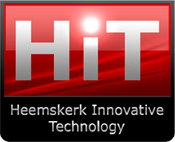Verifying elementary ITER maintenance actions with the MS2 benchmark product
Abstract:
A new facility has been taken in operation to investigate the influence of visual and haptic feedback on the performance of remotely executed ITER RH maintenance tasks. A reference set of representative ITER remote handling maintenance tasks was included the master slave manipulator system (MS2) benchmark product.
The benchmark product was used in task performance tests in a representative two-handed dexterous manipulation test bed at NRG. In the setup, the quality of visual feedback was varied by exchanging direct view with indirect view setups in which visual feedback is provided via video cameras. Interaction forces were measured via an integrated force sensor. The impact of feedback quality on the performance of maintenance tasks at the level of handling individual parts was measured and analysed.
Remote execution of the maintenance actions took roughly 3–5 times more time than hands-on. Visual feedback was identified as the dominant factor, including aspects like (lack of) operator control over camera placement, pan, tilt and zoom, lack of 3D perception, image quality, and latency. Haptic feedback was found to be important, but only in specific contact transition and constrained motion tasks.
